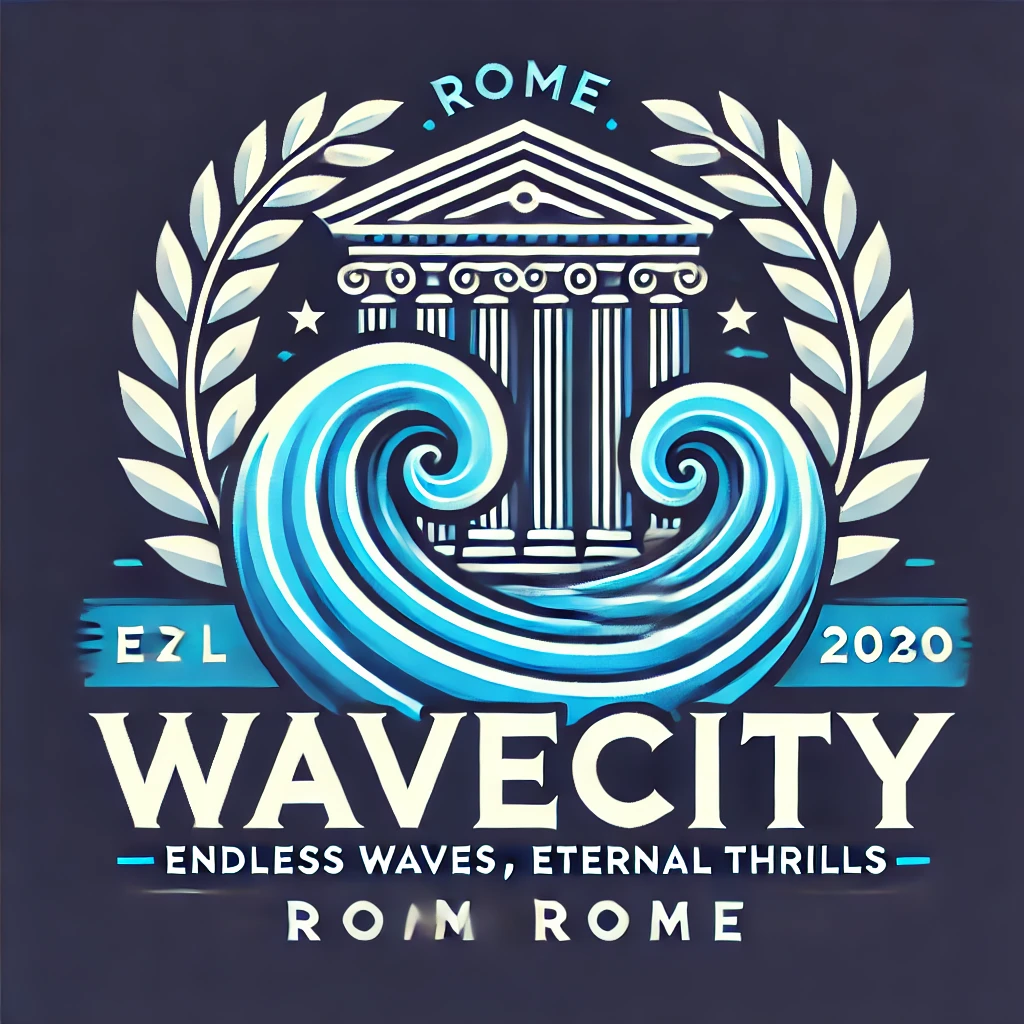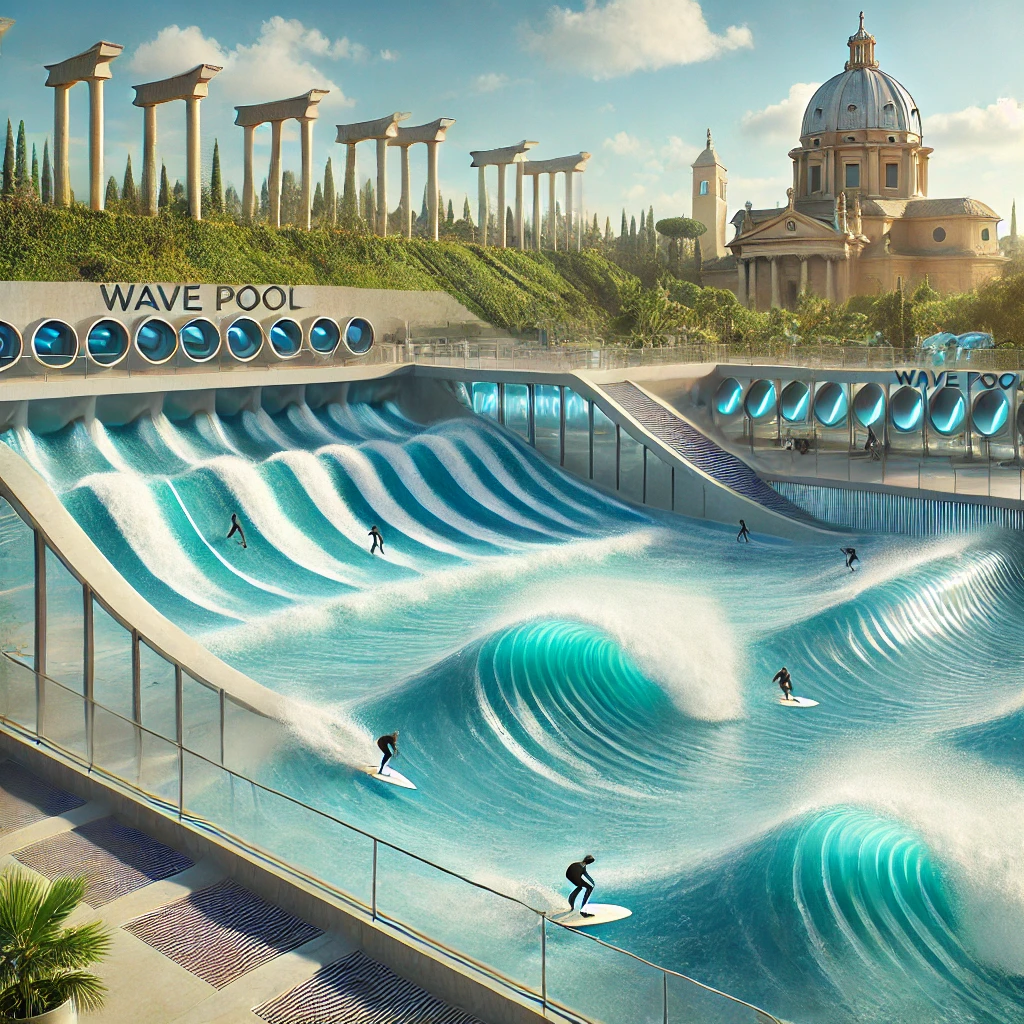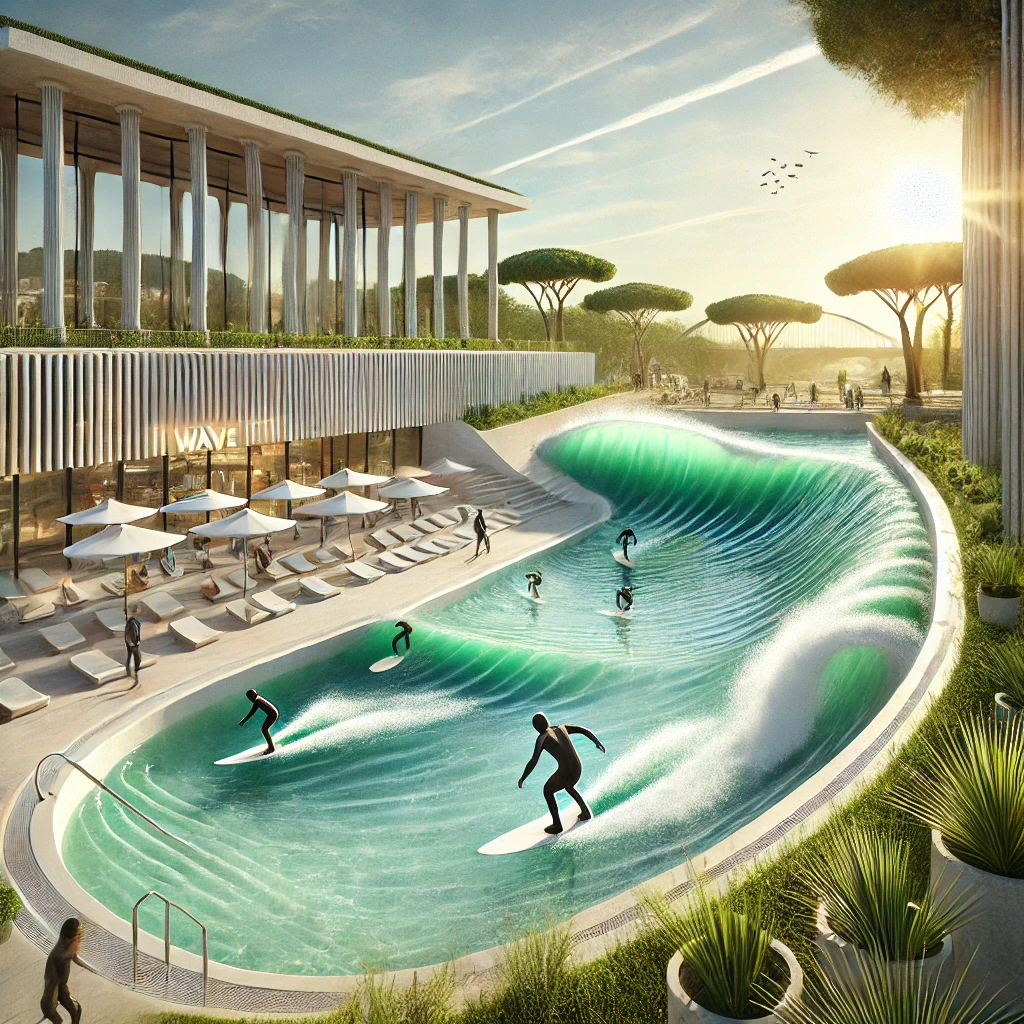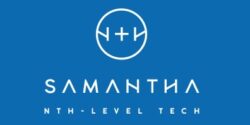Picture this: a surfer’s paradise not by the sea, but in the heart of Rome. Imagine catching perfect waves with the Colosseum as your backdrop. This vision is not just a dream but a meticulously planned business venture. Developed entirely through voice interaction with my digital assistant, Aria, in less than 10 minutes, this story captures the essence of innovation and opportunity.
The Spark of an Idea
It started with a simple thought: what if Rome could offer more than its historic allure? The chosen location for this ambitious project is Fiumicino, a suburban area near Rome. Its proximity to the sea, accessibility via major transportation routes, and ample space make it the ideal site for a professional wave pool. With a population of nearly 3 million and a steady stream of tourists, the city provides an untapped market for adventure sports. Surfing, a global phenomenon, could find its unique home here.

Choosing the Right Waves
Creating the perfect wave involves cutting-edge technology. After exploring various options, the decision narrowed down to:
- Kelly Slater Technology: Renowned for competition-quality waves, ideal for high-end users but costly.
- Australian Piston Technology: Efficient, generating 1,000 to 2,500 waves per hour, catering to a wider audience.
- Intermediate Wave Machines: Our chosen technology balances quality and volume. These machines produce consistent, high-quality waves at a rate of up to 1,500 waves per hour, meeting the needs of both amateurs seeking fun and professionals looking for practice. They also offer flexibility in wave shape and size, ensuring a versatile surfing experience for all skill levels.
We chose an intermediate solution using wave machines that balance quality and volume. This technology produces consistent, high-quality waves at a rate of up to 1,500 waves per hour, meeting the needs of both amateurs seeking fun and professionals looking for practice. The chosen machines offer flexibility in wave shape and size, ensuring a versatile surfing experience for all skill levels.
Investment and Cost Breakdown
Bringing this vision to life requires a significant but well-structured investment:
- Wave Machine: €25 million.
- Land Acquisition: €5 million.
- Facilities: €1-2 million.
Potential reduction: With a €10 million subsidy from local authorities, the initial investment could drop by 50%.
Revenue Assumptions
Rome’s surfer population and tourist influx form the basis of our revenue model:
- Surfer Base: Rome has an estimated 5,000 resident surfers. On average, each is likely to visit the wave pool 6 times per year, generating 30,000 visits annually.
- Short Trips: Additional visits are expected from tourists and day-trippers. Assuming 40,000 extra visits from these groups, the total annual visits rise to 70,000.
- Special Events and Services: A third of total revenue (€2 million) will come from hosting competitions, offering coaching sessions, and selling merchandise.
Pricing for Viability
To ensure financial viability with a wave capacity of 1,000 waves per hour, pricing is set as follows:
- Session Duration: 1 hour.
- Price Per Session: €50 per surfer.
- Waves Per Session: Each surfer gets up to 10 waves.
With these rates, the wave pool can accommodate 100 surfers per hour while maintaining profitability and accessibility.
Load Factor: To achieve the 65% load factor, the wave pool needs 520 surfers daily over 300 operational days, requiring a combination of local, tourist, and event-driven participation.
Daily Revenue: €26,000
Annual Revenue: €7.8 million
Operational Costs
Operating costs, projected at €5 million annually (64% of revenue), include:
- Maintenance: €1.5 million annually.
- Personnel: €1 million (instructors, catering, cleaning).
- Utilities: €2-2.5 million.
Financial Blueprint
The financial backbone of this project is the Net Present Value (NPV), recalculated to include all updated assumptions:
- Investment: €32 million, paid in three equal installments during the first, third, and fifth years.
- Annual Revenue: €7.8 million.
- Operating Costs: €5 million annually (64% of revenue).
- Net Annual Cash Flow: €2.8 million.
- Discount Rate: 8%.
- Project Duration: 20 years.
The updated NPV is approximately €17.79 million, reflecting the substantial long-term profitability of the wave pool despite the phased investment structure and operating costs.
Risk Analysis
Every ambitious venture carries its share of risks, and this wave pool project is no exception. The business plan is most sensitive to the following factors:
- Surfer Attendance: The model assumes 70,000 annual visits, including 30,000 from resident surfers and 40,000 from tourists and day-trippers. Any significant reduction in these numbers could impact revenue.
- Pricing Elasticity: The €50 per session pricing relies on the assumption that the target audience perceives sufficient value. Resistance to this price point could affect adoption rates.
- Operational Costs: Utilities, maintenance, and personnel costs, projected at 25% of revenue, must be carefully managed to maintain profitability.
- Economic and Tourism Trends: The project depends on a steady influx of tourists. Economic downturns or reduced travel activity could lower visitor numbers.
- Technology Maintenance: The wave machines are a cornerstone of the business. Unanticipated maintenance costs or technology failures could disrupt operations and increase expenses.
Mitigating these risks involves flexible pricing strategies, robust marketing, preventive maintenance programs, and cultivating partnerships with local tourism bodies to ensure steady foot traffic.
- Initial Investment: €27 million.
- Revenue Timeline: Positive cash flow within 3 years.
- Net Present Value (NPV): €33 million over 20 years.
- Break-Even Point: 5-6 years.
Financing the Vision
Options include:
- Equity Funding: Attracting venture capitalists.
- Government Grants: Leveraging tourism incentives.
- Debt Financing: Structured over a decade.
- Public-Private Partnerships: Sharing costs with municipalities.

Realizing the Dream
What makes this project truly special is its genesis. Every aspect—from market analysis to financial projections—was crafted through voice interaction with Aria, my intelligent assistant. Aria’s insights streamlined the planning process, transforming complex calculations into actionable strategies.

Conclusion: Catching Rome’s Wave
WaveCity Rome isn’t just a business venture; it’s a story of innovation, collaboration, and bold ambition. For surfers, investors, and thrill-seekers, this project offers a unique blend of sport and culture, creating a landmark experience in the Eternal City. Let’s ride this wave to a brighter, bolder future.
